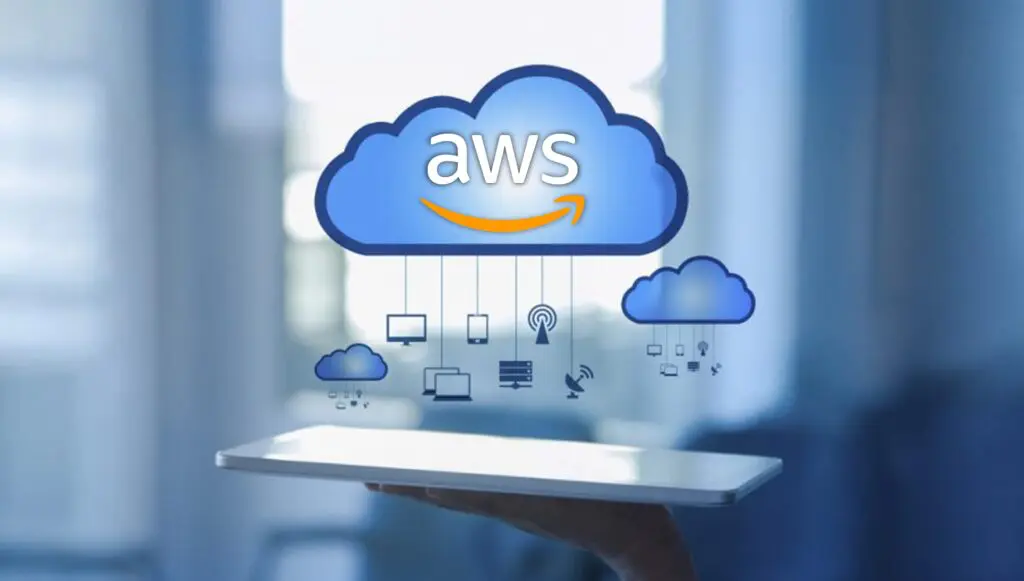Ultimate AWS Certified Cloud Practitioner Cheat Sheet: Ace Your Exam!
Are you getting ready for the AWS Certified Cloud Practitioner exam? You’re in the right place! This cheat sheet will help you prepare for your certification. Let’s look at the key things you need to know to pass the exam, which is all incidentally all covered by our AWS Certified Cloud Practitioner course.
Key Takeaways
| Topic | Key Points |
|---|---|
| Exam Structure | 65 questions, 90 minutes, 70% passing score |
| Main Domains | Cloud Concepts, Security and Compliance, Technology, Billing and Pricing |
| Essential Services | EC2, S3, VPC, IAM, RDS |
| Career Benefits | Higher earning potential, increased job opportunities |
1. Introduction to AWS Certified Cloud Practitioner
The AWS Certified Cloud Practitioner is the entry-level certification that shows you understand the basics of the AWS Cloud. It’s good for both tech and non-tech people who want to learn more about cloud computing. Here’s what you should know:
- It’s an entry-level AWS certification
- Shows you know the basics of AWS Cloud
- Good for both technical and non-technical roles
- The exam has 65 questions
- You need to score 700 out of 1000 points (70%) to pass
- The exam lasts 90 minutes
- Available in multiple languages, including English, Japanese, Korean, and Simplified Chinese
- Can be taken online or at a testing center
This certification can really help your career. In fact, AWS-certified pros earn 25% more than those without certifications. Plus, cloud jobs are growing fast – about 30% each year! The Cloud Practitioner certification is a good starting point for more advanced AWS certifications, making it a great way to begin your cloud career.
2. Exam Structure and Key Domains

The exam covers four main areas. Here’s how much each part counts:
| Domain | Percentage | Status |
|---|---|---|
| Cloud Concepts | 24% | Basic |
| Security and Compliance | 30% | Important |
| Technology | 34% | Critical |
| Billing and Pricing | 12% | Basic |
To do well on the exam, you need to understand each of these areas. Here’s a quick overview of what each part covers:
- Cloud Concepts: This includes understanding why AWS Cloud is valuable, cloud economics, and how to design cloud systems.
- Security and Compliance: Focuses on how AWS and customers share security responsibilities, AWS security and compliance ideas, and how to manage access to AWS.
- Technology: Covers how to use and run things in the AWS Cloud, AWS’s global infrastructure, and main AWS services.
- Billing and Pricing: Involves understanding how AWS prices things, how accounts are structured, and tools for billing and pricing.
3. Essential AWS Services to Know

There are a few key AWS services you really need to know for the exam:
- EC2 (Elastic Compute Cloud): This is like renting virtual computers in the cloud. You can run applications on these virtual servers.
- S3 (Simple Storage Service): Think of this as a big, reliable hard drive in the cloud. You can store and get any amount of data from anywhere.
- VPC (Virtual Private Cloud): It’s your own private section of AWS, like a virtual data center. You can launch AWS resources in your own isolated network.
- IAM (Identity and Access Management): This controls who can do what in your AWS account. It’s important for keeping your AWS resources safe.
- RDS (Relational Database Service): It’s a way to set up, run, and grow databases in the cloud. It works with different types of databases like MySQL and PostgreSQL.
- CloudFront: A fast content delivery network (CDN) that securely delivers data, videos, apps, and APIs to customers around the world.
- Lambda: A service that lets you run code without managing servers.
- CloudWatch: A service that watches over your AWS resources and applications.
Understanding these main services will give you a good foundation for the exam and real-world AWS use. It’s important to know not just what these services do, but also how they work together in common cloud setups.
4. AWS Cloud Concepts Cheat Sheet
Here are some key cloud ideas you need to know:
- IaaS (Infrastructure as a Service): You rent the hardware, manage the software. Examples include EC2 and EBS.
- PaaS (Platform as a Service): The platform is managed for you, you just add your code. Examples include Elastic Beanstalk and Lambda.
- SaaS (Software as a Service): Ready-to-use software that runs in the cloud. Examples include Amazon Connect and WorkSpaces.
- Elasticity: The ability to get resources when you need them and give them back when you don’t.
- Scalability: The ability to handle growth without changing the design.
- High Availability: Making sure your applications are always accessible, often by having backups.
- Fault Tolerance: The ability for a system to keep working even if some parts fail.
AWS has data centers all over the world, grouped into Regions and Availability Zones. This global setup helps make cloud services fast and reliable. Regions are separate geographic areas, while Availability Zones are multiple, isolated locations within each Region.
Cloud computing offers benefits like saving money, being able to grow easily, and being able to try new things quickly. It allows businesses to pay for what they use instead of buying expensive equipment upfront.
5. AWS Security and Compliance Essentials
Security is really important in the cloud. Here are some key things to remember:
- Shared Responsibility Model: AWS secures the cloud, you secure what’s in the cloud. This means AWS is responsible for protecting the infrastructure, while customers are responsible for protecting their data and applications.
- IAM best practices: Use strong passwords, turn on multi-factor authentication, and only give people the access they need. Regularly change access keys and use IAM roles for EC2 instances.
- AWS compliance programs: AWS follows various industry rules and regulations, including HIPAA, PCI DSS, and SOC 1/2/3.
- AWS WAF (Web Application Firewall): Helps protect your web applications from common internet threats.
- AWS Shield: A service that protects against Distributed Denial of Service (DDoS) attacks.
- Amazon GuardDuty: A service that watches for threats to protect your AWS accounts and workloads.
- AWS KMS (Key Management Service): A service that helps you create and control the keys used to encrypt your data.
Understanding AWS security is crucial not just for the exam, but for using the cloud in real life too. It’s important to know how to keep things safe and understand the tools AWS provides for securing your resources.
6. AWS Technology Overview

AWS offers many different services. Here’s a quick overview:
- Compute: Services like EC2, Lambda, and ECS for running applications. EC2 gives you virtual computers, Lambda lets you run code without servers, and ECS helps you run containerized apps.
- Storage: S3, EBS, and Glacier for storing data. S3 is for general storage, EBS is for EC2 storage, and Glacier is for long-term, cheap storage.
- Database: RDS, DynamoDB, and Redshift for managing databases. RDS is for regular databases, DynamoDB is for fast NoSQL databases, and Redshift is for big data analysis.
- Networking: VPC, Route 53, and CloudFront for handling internet traffic. VPC is your private network, Route 53 is for domain names, and CloudFront delivers content fast.
- Management tools: CloudWatch, CloudFormation, and AWS Config for managing your AWS stuff. CloudWatch monitors things, CloudFormation sets up resources, and AWS Config keeps track of your setup.
- Analytics: Amazon Athena for asking questions about data in S3, Amazon EMR for processing big data, and Amazon QuickSight for making business reports.
- Machine Learning: Amazon SageMaker for building AI models, and Amazon Rekognition for analyzing images and videos.
Knowing these services and how they work together is key to understanding AWS. It’s important to have a basic idea of what each service does and when you might use it in real life.
7. AWS Billing and Pricing Guide

Understanding how AWS charges for services is important for the exam and for managing real-world costs. Here are some key points:
- Pay-as-you-go model: You only pay for what you use. This lets you adapt to changing needs without spending too much.
- Reserved Instances: You can save money by promising to use certain services for 1 or 3 years. This is good for applications you know you’ll use for a long time.
- Savings Plans: Another way to save money by promising to use a certain amount of compute power for 1 or 3 years.
- AWS Free Tier: Many services offer some free usage to help you get started. This includes services like EC2, S3, and CloudFront.
- Volume-based discounts: The more you use, the less you pay per unit. This applies to services like S3 where the price per GB goes down as you store more data.
- AWS Budgets: Lets you set limits on your spending and get warnings when you’re close to going over.
- AWS Cost Explorer: A tool that helps you see and understand your AWS costs over time.
The AWS Pricing Calculator can help you guess how much your projects will cost. Learning about AWS pricing can help you save money on your cloud use. It’s important to understand not just how pricing works, but also how to use AWS tools to watch and control your costs.
8. Exam Preparation Strategies
Here are some tips to pass the exam:
- Use official AWS training resources, like the AWS Cloud Practitioner Essentials course. This free online course gives you a good overview of AWS Cloud concepts.
- Take practice exams to get used to the types of questions. AWS offers official practice questions, and there are many other resources available too.
- Join study groups or forums to talk about concepts with others. Explaining things to others can help you understand them better.
- Make flashcards for important terms and concepts. This can help you remember the many AWS service names and what they do.
- Try hands-on labs to get real experience with AWS services. AWS offers free labs through AWS Skill Builder.
- Read AWS white papers and FAQs. These give detailed information on various AWS services and concepts.
- Use the AWS Free Tier to try out services. Real experience can help you understand concepts better.
- Focus on understanding the main services (EC2, S3, VPC, IAM) really well. These are the foundation of many AWS solutions.
- Don’t forget about the business side of AWS. Understand why cloud computing is valuable and how it can help businesses.
Remember, the exam tests your understanding, not just your memory. Good preparation is key to success! Try to think about how AWS concepts apply to real-world situations to understand them better.
9. Career Benefits of AWS Cloud Practitioner Certification
Getting AWS certified can really help your career. Here’s why:
- High demand: Cloud skills are really needed, with job growth expected to be 33% in the next five years. This certification shows employers you know about cloud computing.
- Better pay: AWS-certified professionals often earn more than those without certifications. According to Global Knowledge, AWS-certified individuals earn an average salary of $129,868.
- Career growth: It’s a good starting point for more advanced AWS certifications. Many people start with Cloud Practitioner before moving on to harder certifications.
- Credibility: It shows employers you have proven cloud skills. This can be really helpful if you want to move into a cloud-related job.
- Networking opportunities: AWS certification gives you access to a community of other certified professionals where you can connect and learn.
- Up-to-date knowledge: The certification makes sure you know about the latest AWS services and best practices, which is important in the fast-changing cloud world.
- Versatility: The Cloud Practitioner certification is useful for both technical and non-technical jobs, making it a flexible credential to have.
AWS certifications can open doors to exciting job opportunities in cloud computing. Whether you want to start a career in cloud computing, move from a traditional IT job, or improve your current cloud skills, the AWS Cloud Practitioner certification gives you a solid foundation.
10. AWS Cloud Practitioner Certification FAQs
Here are answers to some common questions:
- How do I sign up? Log in to aws.training, click Certification, and schedule through Pearson VUE. You can choose between an online exam or a test center exam.
- How long is the certification good for? 3 years. After this time, you’ll need to take the exam again to keep your certified status.
- Can I retake the exam if I fail? Yes, after waiting 14 days. You can take it as many times as you need, but you’ll have to pay the full exam fee each time.
- Can I take the exam online? Yes, for all AWS Certification exams. This lets you take the exam from home or office, as long as your computer meets the requirements.
- What score do I need to pass? You need to score at least 700 out of 1000 points (70%) to pass the exam.
- How much does the exam cost? The exam fee is $100 USD, though prices might be slightly different in different countries.
- Do I need to know how to code? No, the Cloud Practitioner certification doesn’t require any coding knowledge.
- How long should I study? Most people spend 1-3 months preparing, depending on what they already know and how much they study.
Understanding how the exam works can help you feel more confident on test day. Remember, good preparation is the key to success in any certification exam.
Conclusion
The AWS Certified Cloud Practitioner exam is your first step into the exciting world of cloud computing. With this cheat sheet and good preparation, you’re on your way to passing the exam and boosting your career. Remember, the key is to understand the concepts, not just memorize facts. Good luck on your AWS certification journey!
Ready to take the next step? Check out our AWS certification courses to help you prepare for success!



